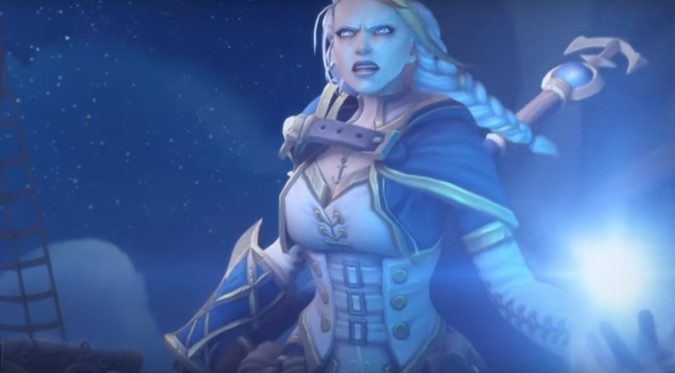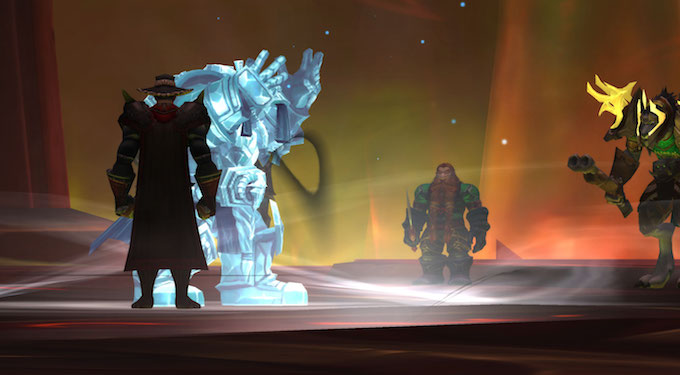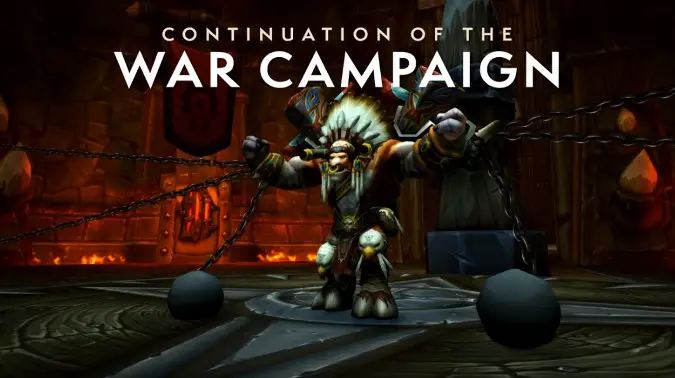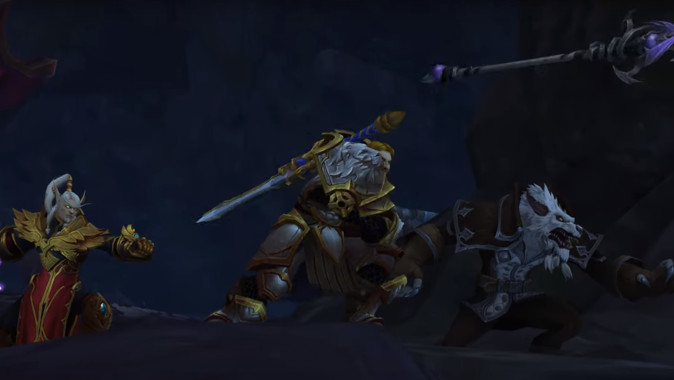Patch 8.2’s Rise of Azshara cinematics show the evolution of storytelling in WoW

Those wily folks over at Wowhead have, as if their wont, datamined a big treasure trove of in-game rendered cinematics from the upcoming Patch 8.2 storyline, including one for the Heart of Azeroth, the War Campaign, and specific story beats on Nazjatar itself. Now, if you want a ton of detailed spoilers for these cinematics, that’s what that Wowhead post is for — what I find fascinating here is what this patch and these cinematic signify for the evolution of and direction of storytelling both in the patch itself and in World of Warcraft at large.
Because make no mistake, patch 8.2 has a lot of in-game rendered cinematics, and this has definite implications for what Blizzard can do in terms of the storytelling as we move forward. As much as all might love “Old Soldier” and other such fully rendered cinematics, they lack the immediacy of seeing characters move and act as they do in game, a storytelling trick Blizzard has long used going back to Warcraft 3. Having it this present in World of Warcraft means that players of both factions get to see their various lore figures in a more seamless fashion.
And oh, seriously, spoilers ahead for patch 8.2 and these various storylines. I mean, for real, if you go any further there will be spoilers and you will be spoiled. Even the first two header images I’m using aren’t taken from these cinematics, just so you have a chance to duck out now.

The Heart of Azeroth
The two Heart of Azeroth cinematics do a lot to hammer home the point that no, things aren’t getting better for our world. But not all hope is lost, and what’s more, the player character is still front and center of the effort to save the world.
Again, not going into too many spoilers, but one of the things that in-game rendered cinematics like this one can do is include the player — you clearly see in this cinematic that the player character is front and center in this cinematic, interacting with MOTHER and Magni. That’s something you really couldn’t get before and something that these cinematics are definitely making use of. We also see this in the follow up cinematic involving Magni and the Heart of Azeroth.
One thing this style of storytelling can do is center the PC at the heart of events, pun not intended. Here Magni is addressing the player, whose character has gone out and performed the deeds that led to that moment. It’s a meaningful moment and we get more than a quest box with some text acknowledging it — we get to see it, as the power is unleashed and our character is centered in the narrative.

The War Campaign
Due to the nature of the War Campaign short cinematics and the characters involved, the player is less centered during the events that unfold, but they’re still present, and you can see in these two that the player character still gets a visual acknowledgement of their role in the events that transpire.
It’s absolutely the case that the moment is dominated by the meeting of Jaina and Thrall, who haven’t really spoken or interacted in lore for quite some time now. And that’s fine — not every moment has to be a big hero moment for the player. Just getting to be in the room when these meetings go down is in and of itself a really big deal, and it’s a strength of the in-game rendering to allow you that first hand view of these events instead of watching them unfold without you in them the way they did, as an example, at the end of the Siege of Orgrimmar. How much better would that ending have been if you’d seen your character standing right next to Thrall or Varian?
This cinematic also definitely centers the narrative on Baine and the big Alliance and Horde lore figures — Jaina, Thrall, Mathias Shaw and Saurfang — but the player is there, taking part in the mission alongside them. It’s the strength of this technique that it gives you a real, tangible sense of what you’ve done and what you are doing. But not all of these cinematics are used for that purpose.

Nazjatar and you
The first Nazjatar cinematic is, frankly, not all that interesting. It’s just look, there are a lot of Naga and, well, we didn’t really need an in game cinematic for that. But the Horde and Alliance cinematics showing the entry into Nazjatar both show the player alongside the Horde and Alliance luminaries, they help show how terrifying Azshara’s power really is.
Both in the Horde and Alliance version, the player is standing alongside one of the greatest mages currently alive — Thalyssra, First Arcanist of the Nightborne or Jaina Proudmore, to be exact — and neither can successfully escape Azshara’s grasp. Your player being there really isn’t as important as that note of dread but it does still ground the moment in the personal. The player is not present for the Lady Zhareesa cinematic, however — and it’s just as well.
The strength of the in-game rendering isn’t merely that it allows the player to be present. It also allows an immediate scene that translates more seamlessly into actual gameplay and lets you see the model you’re about to confront in motion, and gives us the ability to watch characters we’re not going to see in game for quite some time like Azshara herself. Such moments are stronger when presented directly in this manner than they would be if we found a quest giver on the ground, read some text, and then moved into the encounter. Similarly, getting to see a moment happen in a cinematic that directly follows the player’s actions and features the player themselves is a nice way to bridge two stages in a world encounter.
This is more a cutscene than a full fledged cinematic, and it’s a great place to return focus to the player from the NPC’s. The final cinematic we have access to goes back to the War Campaign style of cinematic — the player is there, taking part, but the Horde and Alliance figures are the ‘stars’ of events. The flexibility of the in-game rendering is that it can do completely player fixed in game moments, can feature but not center them, or can eschew them entirely for other figures and they can even switch between these storytelling options on a case by case basis — they can be full story cinematics with dialog, can be small cutscenes, or can bridge between various moments in a quest or encounter.
How this will translate into future content — if we’ll see more or less of this technique and how it may yet evolve — is up in the air, but I definitely find seeing how it’s evolved from its use at the end of Legion and through earlier parts of Battle for Azeroth to be fascinating.
Please consider supporting our Patreon!
Join the Discussion
Blizzard Watch is a safe space for all readers. By leaving comments on this site you agree to follow our commenting and community guidelines.
 @MatthewWRossi
@MatthewWRossi



